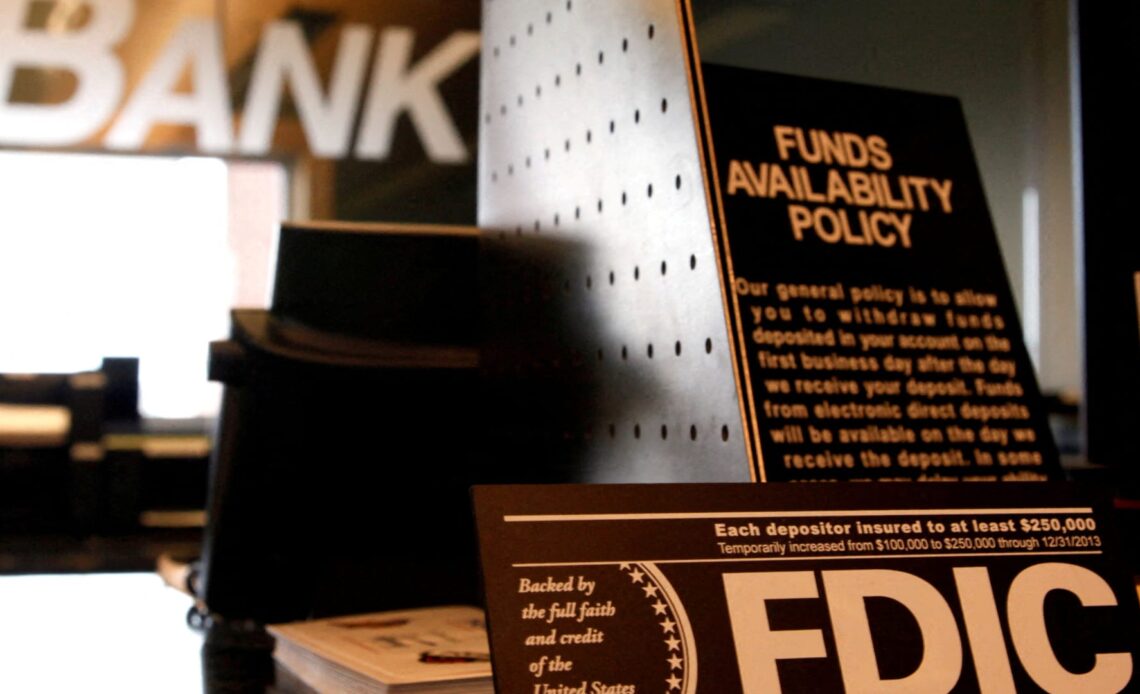Signs explaining Federal Deposit Insurance Corporation (FDIC) and other banking policies on the counter of a bank in Westminster, Colorado November 3, 2009.
Rick Wilking | Reuters
If there wasn’t enough banking jargon to blind you, it’s time to learn a new piece of it: Welcome to the industry’s era of the “criticized loan.”
It’s a loan that’s not gone bust, or even missed a payment. But in a time when Wall Street is vibrating to any sign of recession risk, especially from banks, it’s gaining new currency. Criticized loans are those that show preliminary signs of higher risk, such as a developer who’s making payments but is otherwise having financial trouble, or an office building that recently lost a big tenant and needs to replace it.
And they’re rising, which sets off the kind of bells that have sent bank stocks down roughly 20% since early March, even as earnings from the sector are coming in healthier than expected. Wall Street is watching stats on commercial real estate loans almost as closely as for signs that depositors are fleeing for higher interest rates paid by money-market funds (the No. 1 question on recent earnings calls).
Banks are being asked more about criticized loans partly because other credit quality metrics look so good, despite the failures of Silicon Valley Bank and Signature Bank last month, according to David George, a banking analyst with Robert W. Baird & Co. Watching these loans is a way to gain at least limited insight into a real estate downturn many analysts expect to get worse before it gets better, as a combination of recession fears and the slow return of workers to post-Covid offices drives expectations of rising office vacancy rates.
“It’s more subjective, but there are regulators at every bank,” he said. “Criticized loans could be paying or performing but a loan could be singled out because of its collateral.”
Not all banks disclose criticized loan growth in earnings reports, and the definition of a criticized asset is more fluid than classifications of whether a loan has missed payments or is otherwise “non-performing,” meaning it has missed payments or violated some other term of the loan deal. A bank’s quarter-end list of criticized assets is developed by a bank itself, under the supervision of bank examiners, according to David Fanger, senior vice president at the bond-rating agency Moody’s Investor Service.
The Federal Deposit Insurance Corp.’s guidelines for such loans say they should be singled out if…
Click Here to Read the Full Original Article at Top News and Analysis (pro)…


